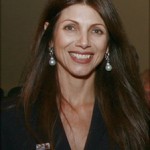
Ms. Norie Sato
Is Public Art Dead?
Posted by May 30, 2014

Ms. Norie Sato
In the late 1970s, artists and critics were asking “Is Painting Dead?” In the face of new approaches, media and concepts, the art world was looking at new ways of art making versus the old. It was somewhat of a facetious question, yet there was a lot of truth in it. Public art as we know it, as “government-sponsored” percent programs, is getting to be more than 40 years old. Programs are celebrating 30, 40, 50 years of existence. It is no longer a new thought, no longer exciting in its promise, reach and approach…or is it? I’m not sure I can answer that question yet, but here are a few observations that may signal a trend.
Read More











